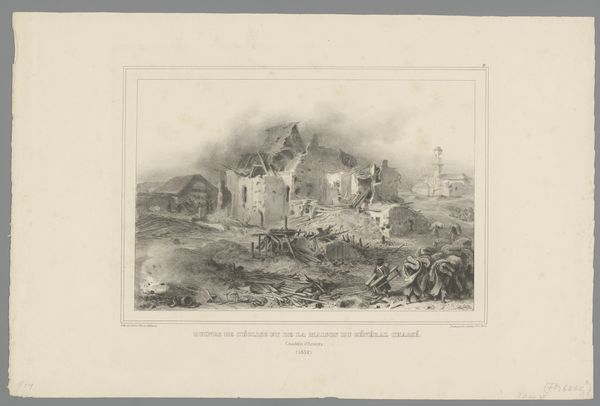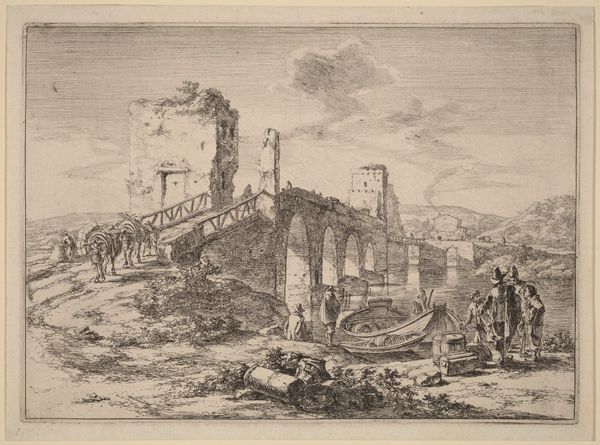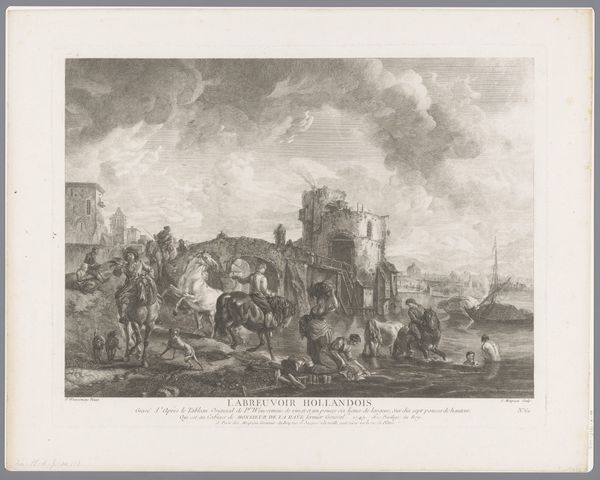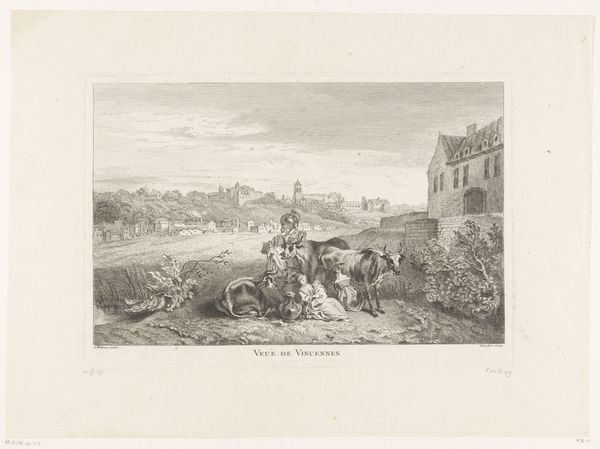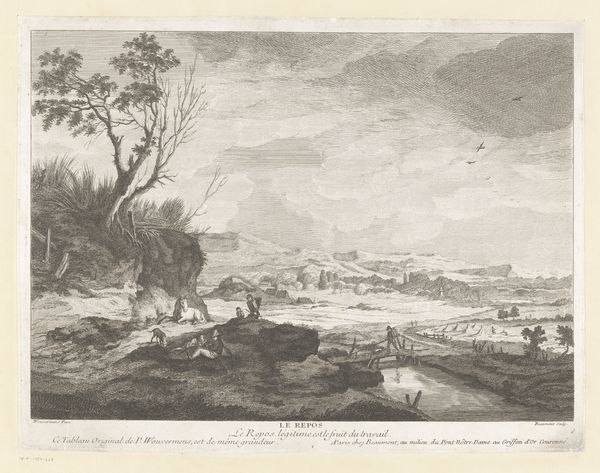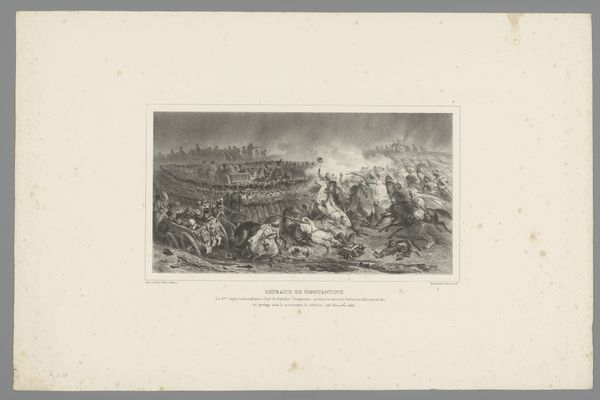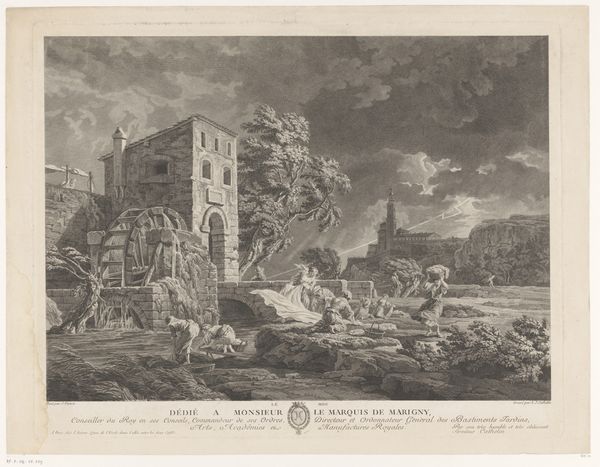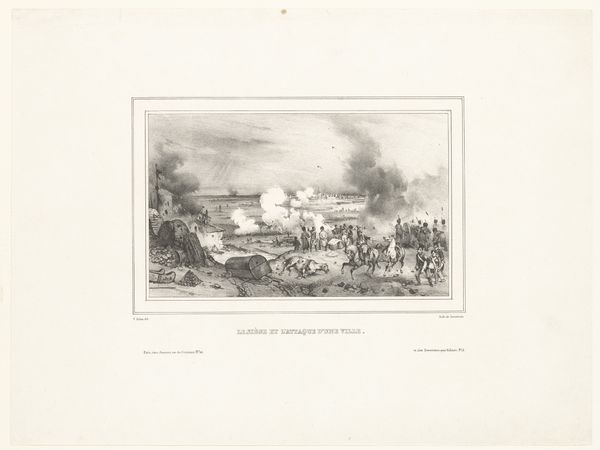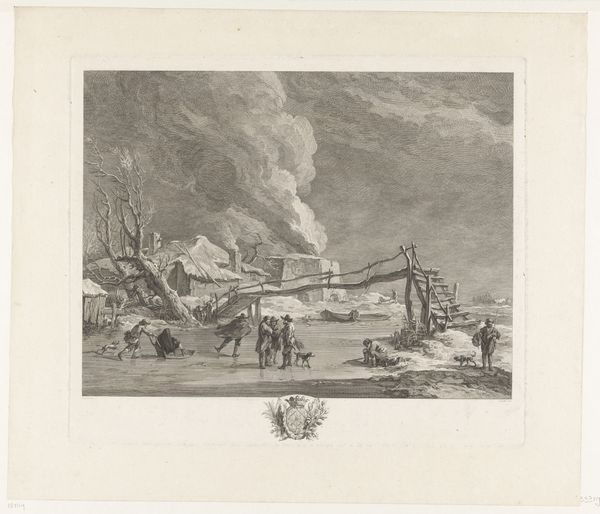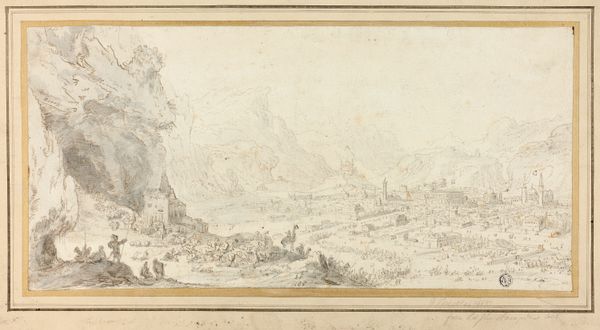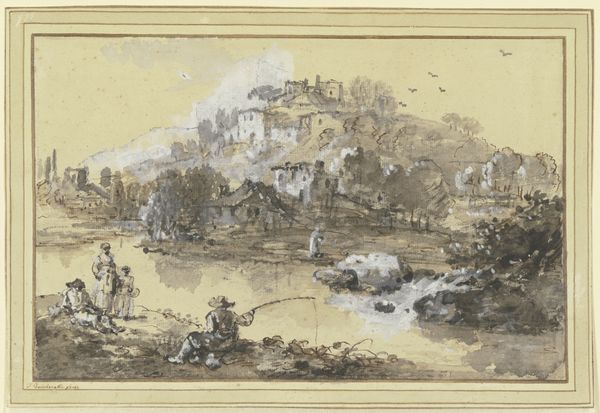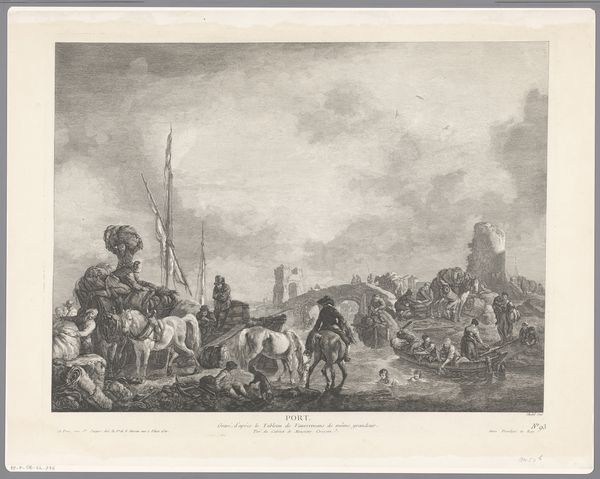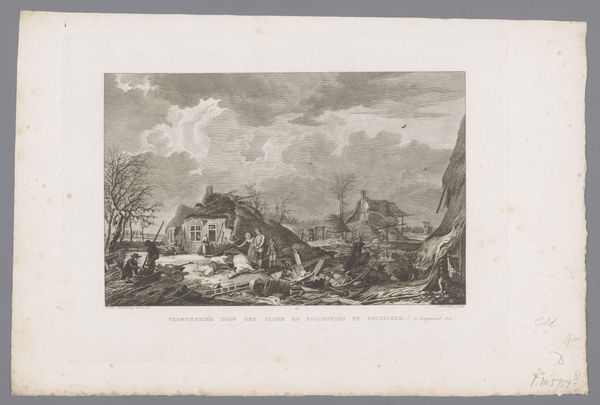
drawing, lithograph, watercolor
#
drawing
#
water colours
#
lithograph
#
landscape
#
watercolor
#
coloured pencil
#
romanticism
#
cityscape
#
mixed media
#
watercolor
Dimensions: height 320 mm, width 500 mm
Copyright: Rijks Museum: Open Domain
Editor: So, this is "Ruïnes van de kerk en het huis van generaal Chassé, 1832" by Auguste Raffet, created in 1833. It's a lithograph with watercolor, showing a scene of destruction. What strikes me is the sheer amount of debris and how that affects the sense of scale. What do you see in this piece? Curator: I see a brutal depiction of war's impact on infrastructure and, by extension, the lives interwoven with it. The choice of lithography, a printmaking process enabling mass production, is significant. Raffet isn't just creating art; he's disseminating a specific vision of conflict. Notice the laborers in the foreground. They are rendered almost as part of the rubble itself, which speaks to the artist's view of their social role in the wake of devastation. How do their tools and labor contribute to the image's overall meaning, would you say? Editor: That’s a great point about labor. It highlights the material consequences of war, not just the abstract idea of conflict. The tools imply repair, but it seems an overwhelming task. Do you think the choice of watercolor adds another layer to this reading? Curator: Absolutely. Watercolor, with its inherent fluidity, mirrors the instability of the scene. The medium itself reflects the dissolving structures, both physical and social. It becomes part of the statement, rather than just a method of depiction. The image isn't solely about aesthetic pleasure; it is actively revealing the materiality of destruction and the labor required for any potential reconstruction. We should consider what the process asks the audience to confront in their consumption of this work. Editor: I hadn’t thought about how the materials themselves contributed to the narrative. Looking at the lithography and watercolors this way definitely provides a deeper understanding. Curator: Precisely. By analyzing the materials and their application, we uncover the artist's commentary on labor, destruction, and the social fabric undergoing immense stress.
Comments
No comments
Be the first to comment and join the conversation on the ultimate creative platform.
